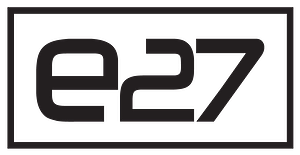Redesigning Jobs Around AI Capabilities
Artificial intelligence is no longer just a tool for automating repetitive tasks—it is fundamentally reshaping how work gets done. In many enterprises, the conversation has shifted from “which jobs wi...
Artificial intelligence is no longer just a tool for automating repetitive tasks—it is fundamentally reshaping how work gets done. In many enterprises, the conversation has shifted from “which jobs will AI replace?” to “how should we redesign jobs to work alongside AI?” This shift recognizes that AI excels in specific capabilities such as perception, prediction, and decision-making, while humans remain unmatched in creativity, judgment, and empathy.
For business leaders, this transition is both a challenge and an opportunity. Rather than replacing human workers, AI creates the potential to elevate their roles, offload cognitive overload, and unlock new forms of value.
Understanding the AI Capability Landscape
Before redesigning jobs, it is essential to understand what AI is truly capable of.
AI capabilities can be grouped into five broad categories:
-
Perception – interpreting text, images, video, and audio at scale
-
Prediction – forecasting trends, identifying risks, and anticipating needs
-
Decision-making – recommending optimal actions based on data patterns
-
Generation – creating text, images, code, and even product designs
-
Interaction – engaging with humans through natural language
When enterprises map these strengths against human abilities, a clear pattern emerges. AI is exceptional at processing vast data sets with speed and accuracy, while humans excel in context-driven reasoning, emotional intelligence, and ethical judgment. The goal of job redesign is to create roles that maximize the synergy between these two sets of strengths.
From Task Automation to Role Reimagination
For years, enterprises approached AI as a tool for automating tasks—reducing manual effort and improving efficiency. However, simply automating pieces of a workflow does not fully unlock AI’s potential.
Instead of asking, “Which tasks can AI do for us?” forward-thinking leaders ask, “How should we reimagine this role with AI as a collaborator?” This shift moves beyond piecemeal automation toward a holistic redesign of responsibilities, workflows, and performance expectations.
For example, a financial analyst’s job might previously have focused on manually gathering and processing data. With AI handling data collection and preliminary analysis, the analyst’s role evolves into a more strategic function—interpreting insights, advising stakeholders, and identifying opportunities.
Framework for Redesigning Jobs Around AI
Deconstructing Jobs into Tasks
The first step in redesigning a job is breaking it down into its core components. Using process mining and workflow analysis, enterprises can categorize each task as:
-
Automatable – tasks AI can fully handle
-
Augmentable – tasks AI can support but still require human input
-
Human-only – tasks best performed by people due to judgment or creativity
This granular view reveals where AI can add the most value without eroding the human contribution.
Reallocating Responsibilities
Once tasks are mapped, responsibilities can be reallocated. AI can take on cognitive-heavy tasks like pattern recognition, data synthesis, or monitoring, while humans focus on higher-value activities such as relationship-building, strategic thinking, and creative problem-solving.
This not only improves productivity but also enhances job satisfaction. Employees spend less time on tedious work and more time on meaningful contributions.
Creating New Human-AI Collaboration Models
There are multiple ways to design human-AI collaboration within a role:
-
Co-pilot model – AI assists the worker by providing insights, suggestions, or automating small steps.
-
AI-first workflow – AI handles the primary workstream, with humans supervising and making final judgments.
-
Fully autonomous processes – AI manages entire workflows, with humans intervening only in exceptional cases.
The right model depends on the business context, risk tolerance, and regulatory requirements.
Implications for Different Job Categories
Knowledge Work
AI is becoming a research assistant, summarizer, and advisor for knowledge workers. Roles like legal researchers, consultants, and analysts now rely on AI for instant data retrieval and preliminary analysis. This frees humans to focus on interpreting nuanced insights and making strategic decisions.
Operational and Field Work
In industries like manufacturing, logistics, or utilities, AI augments operational work by predicting maintenance needs, optimizing schedules, and monitoring safety. Field workers are increasingly equipped with AI-driven insights, enabling them to resolve issues faster and more effectively.
Customer-Facing Roles
Sales, marketing, and service teams are blending AI-driven personalization with human empathy. AI can recommend tailored offers or predict customer churn, while human agents build trust and handle complex emotional interactions. This hybrid model enhances customer experience at scale.
Reskilling and Change Management
Redesigning jobs around AI is not just a structural change—it requires significant cultural and skill shifts.
Employees must develop AI literacy, learning how to interpret AI outputs, collaborate with AI systems, and manage AI-driven workflows. Training programs should shift from narrow task-based learning to broader capability development, preparing workers to adapt as AI evolves.
Change management is equally critical. Transparent communication about AI’s role, clear guardrails for ethical use, and mechanisms to build trust are essential to overcoming workforce resistance.
Measuring Success in AI-Redesigned Jobs
Success should not be measured solely by cost savings or efficiency gains.
Key performance indicators should include:
-
Productivity improvements across entire workflows
-
Employee satisfaction and engagement in augmented roles
-
Enhanced customer experience and faster response times
-
New value creation, such as improved accuracy, personalization, and scalability
Continuous feedback loops between employees, AI systems, and leadership will ensure that job redesign remains adaptive and sustainable.
The Future of Work Architectures
As AI matures, traditional static job descriptions will give way to more fluid, capability-based roles. New job families will emerge, including AI trainers, explainability experts, and workflow designers who specialize in orchestrating human-AI ecosystems.
Enterprises will begin structuring their organizations more like adaptive networks than rigid hierarchies, with teams of humans and AI agents collaborating dynamically based on business needs.
Conclusion
AI is not just about doing the same work faster—it is about redefining what work should look like in the first place. By intentionally redesigning jobs around AI capabilities, enterprises can elevate human potential, create new forms of value, and stay ahead in an increasingly intelligent economy.
The future belongs to organizations that embrace human-AI collaboration as the new normal, not as an afterthought.



